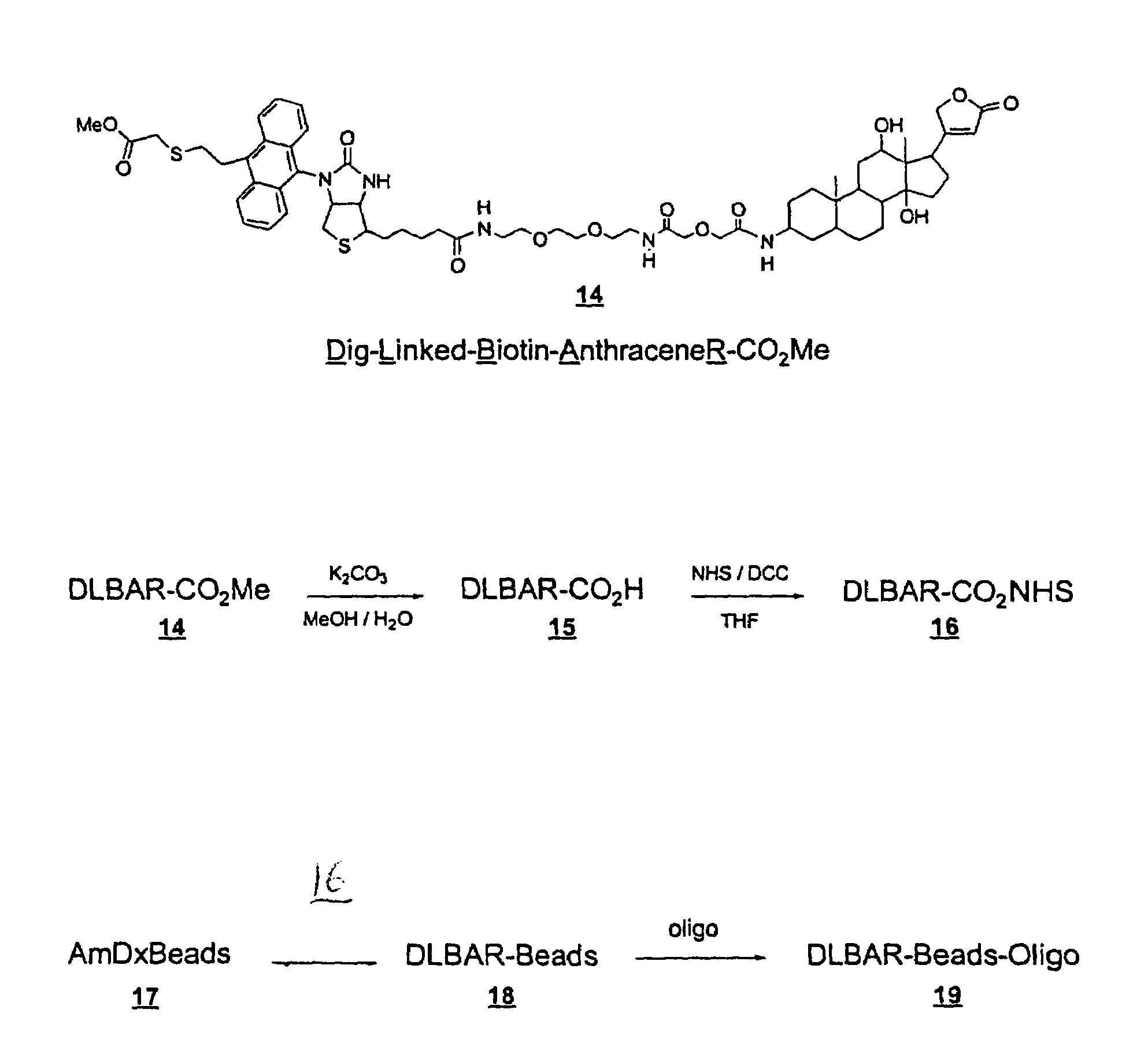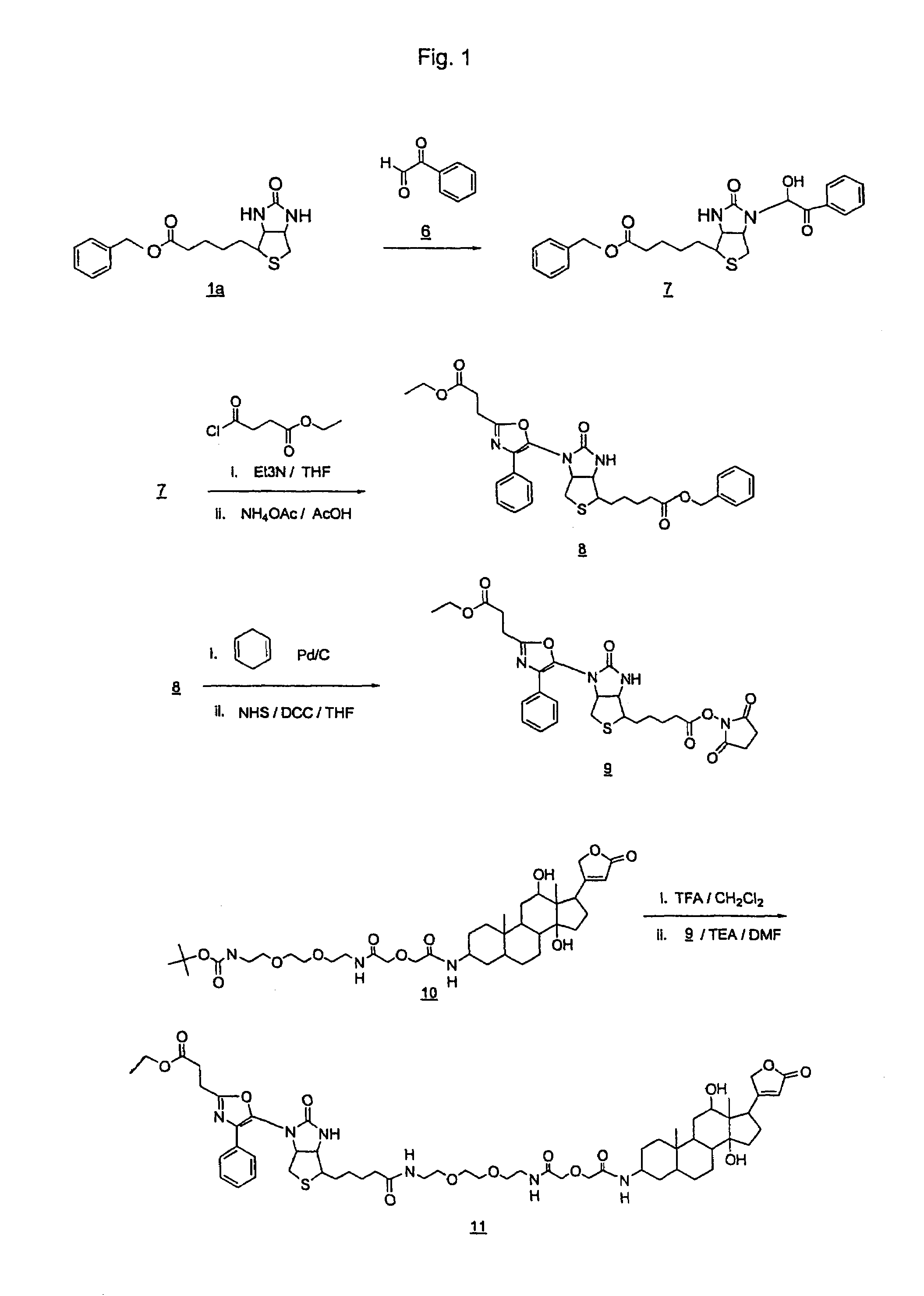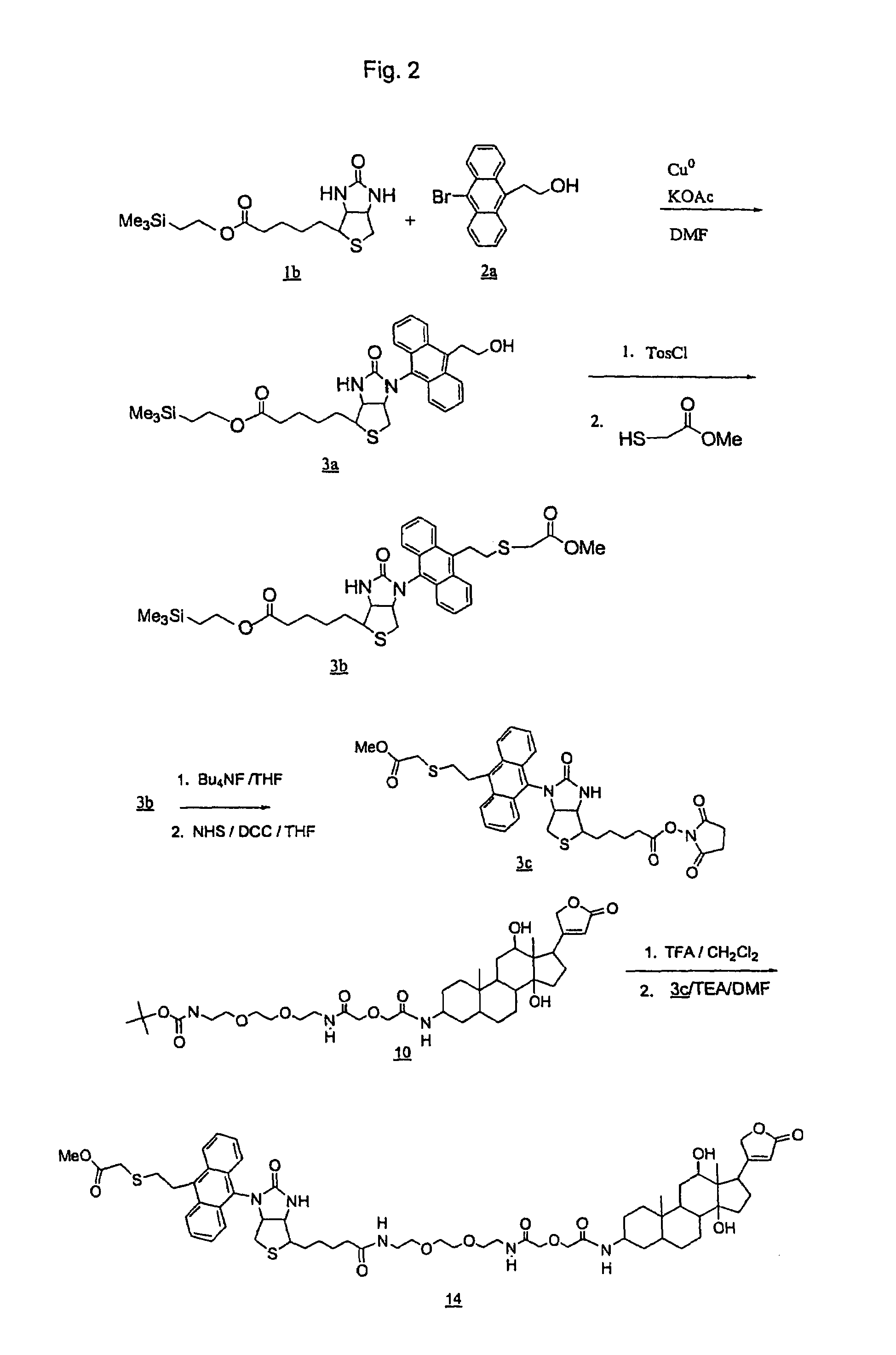Amplified signal in binding assays
- Summary
- Abstract
- Description
- Claims
- Application Information
AI Technical Summary
Benefits of technology
Problems solved by technology
Method used
Image
Examples
specific examples
[0208]The following assays are provided by way of illustration and not limitation to enable one skilled in the art to appreciate the scope of the present invention and to practice the invention without undue experimentation. It will be appreciated that the choice of analytes, photosensitizers, substrate molecules, surfaces, particles and reaction conditions will be suggested to those skilled in the art in view of the disclosure herein in the examples that follow.
[0209]The following examples illustrate preparation of Dig-Linked-Biotin-Oxazole-RNHS ester (DLBOR-CO2NHS ester) (13) (Example 1); Dig-Linked-Biotin-Anthracene-RNHS ester (DLBAR-CO2NHS ester)(16) (Example 2); Dig-Linked-Biotin-Anthracene-R Beads (DLBAR-Beads)(18) for nucleic acid detection amplification (Example 3); Dig-Linked-Biotin-Anthracene-R / Oligo beads (DLBAR / Oligo-beads)(19) for nucleic acid detection amplification (Example 4); measurement of Dig-Linked-Biotin (DLB) release from DLBAR-Y using soluble sensitizer (Examp...
example 1
Preparation of Dig-Linked-Biotin-Oxazole-R-NHS ester (DLBOR-CO2NHS ester) (13)
[0275]This Example describes the preparation of DLBOR-CO2NHS ester as shown in FIG. 1.
A. Materials and Instrumentation:
[0276]All reagents were reagent grade and were used without further purification with the exception of THF and toluene which were freshly distilled from sodium before use and diisopropylethylamine which was dried over 3 Å sieves. Silica gel 250 analytical plates were obtained from Analtech. 1H-NMR was recorded on a Bruker 250 MHz FT-NMR Spectrometer using deuterated solvents obtained from Aldrich. UV spectra were run on a Hewlett Packard model 8452A Diode Array Spectrophotometer. Manual chemiluminescence measurements were made on a custom built Oriel Box, automated chemiluminescence measurements were made on a TECAN Model 5052. Fluorescence measurements were made on a Hitachi F-4500 Fluorescence Spectrophotometer. Mass spectra were obtained from the UC Berkeley Mass Spectrometry Laboratory...
example 2
Preparation of Dig-Linked-Biotin-Anthracene-R-NHS ester (DLBAR-CO2NHS ester) (16).
[0294]This Example describes the preparation of DLBAR-CO2NHS ester as shown in FIGS. 2 and 3.
1. Preparation of Trimethylsilylethylbiotin-hydroxyethylanthracene (3a).
[0295]
[0296]Biotin was protected with trimethylsilylethanol using DCC in DMF at ambient temperature. Following removal of the urea by filtration, volatiles were removed by rotary evaporation at 60°, 99% by TLC (4% MeOH / CH2Cl2). The structure was verified by NMR (see 1H NMR (CDCl3) δ: 5.8 (s, 1H), 5.4 (s, 1H), 4.5 (m, 1H), 4.3 (m, 1H), 4.1 (t, 2H), 3.1 (m, 1H), 2.9 (m, 1H), 2.7 (m, 1H), 2.3 (t, 2H), 1.65 (m, 4H), 1.4 (m, 2H), 0.95 (t, 2H), 0.05 (s, 9H).
[0297]The silyl protected biotin (1b) (1.21 g, 3.54 mmol) was combined with 9-bromo-10-hydroxyethylanthracene (2a) (1.066 g, 3.54 mmol), copper powder (225 mg, 3.54 mmol), and potassium acetate (0.42 g, 4.25 mmol) in 10 ml DMF. The mixture was bubbled with argon for 5 min, and stirred overnigh...
PUM
| Property | Measurement | Unit |
|---|---|---|
| Time | aaaaa | aaaaa |
| Time | aaaaa | aaaaa |
| Time | aaaaa | aaaaa |
Abstract
Description
Claims
Application Information
 Login to View More
Login to View More - R&D
- Intellectual Property
- Life Sciences
- Materials
- Tech Scout
- Unparalleled Data Quality
- Higher Quality Content
- 60% Fewer Hallucinations
Browse by: Latest US Patents, China's latest patents, Technical Efficacy Thesaurus, Application Domain, Technology Topic, Popular Technical Reports.
© 2025 PatSnap. All rights reserved.Legal|Privacy policy|Modern Slavery Act Transparency Statement|Sitemap|About US| Contact US: help@patsnap.com



